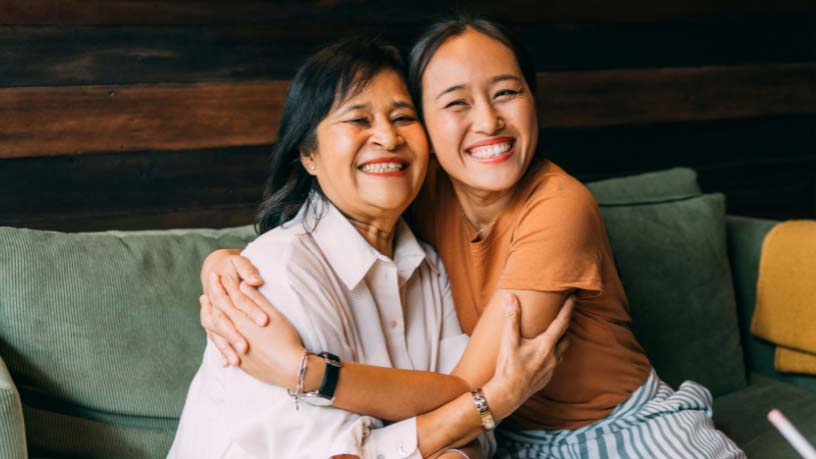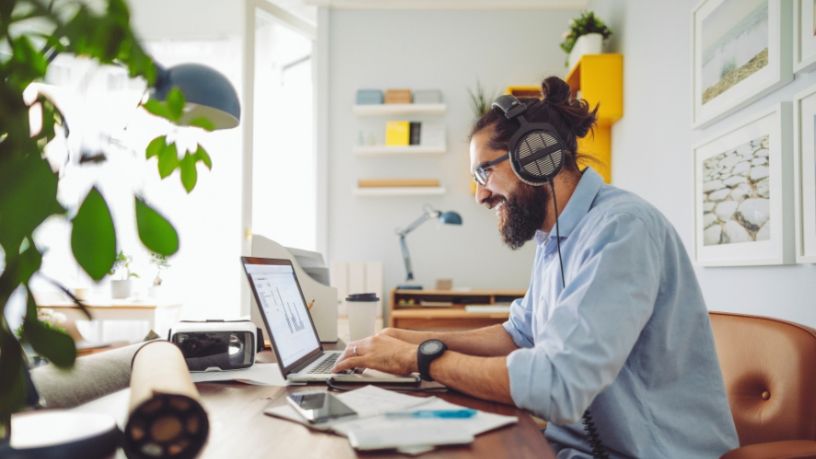Earbuds are part of modern life, but are they doing you harm?
Key takeaways
The dangers of noise-induced hearing loss are very real. Find out if you’re at risk.
We explore safe listening habits with expert tips from a Bupa Clinical Audiologist, including ideal volumes and listening times.
According to The World Health Organization, approximately 50% of people aged between 12 and 35 are at risk of hearing loss from overexposure to loud sounds.1 And exposure to loud noise is one of the biggest causes of preventable hearing loss in Australia.2
What’s more, according to one study, people who use headphones in an already noisy environment (for more than 80 minutes per day) may be 4.5 times more likely to develop hearing loss.3
According to Simon Davis, Bupa Audiology Services Manager and Clinical Audiologist, noise-induced hearing loss occurs when the little hairs inside your inner ear become damaged from noise.
“And once those hair cells are damaged, they can't be repaired,” says Davis.
How loud is too loud?
“The problem with earbuds and headphones is that many people don’t know what the maximum output is,” says Davis. “So when you put them into a device (like a phone), you’re not aware of the level it’s producing noise at.”
If you’re unsure about whether your earbuds are too loud, Davis recommends getting a sense of what your device can produce by turning the volume up to its maximum (with your earbuds away from your ears). If that maximum volume is close to your normal listening volume, then it might be too loud.
If you can, Davis also recommends checking the device’s volume options and making sure that the output you’re listening at is below 80 decibels.
When it comes to noise-induced hearing loss, the other consideration, Davis says, is the amount of time you spend with your earbuds on.
“Even if you’ve limited the volume, you could still potentially damage your hearing with long-term exposure,” he says.
“Listening to music for 2 to 3 hours a day at a very excessive volume puts you at risk of damaging your hearing which would be consistent with the type of hearing loss we see in factories and extreme noise exposure.”
For Davis, this concern is especially worrying for young people. “Kids and teens may not have the education or skills to be able to manage that themselves,” he says. “So, [parents or guardians] need to be very wary of monitoring volumes.”
If they get hearing loss as a child, teenager or young adult, they will potentially carry that damage for the rest of their life.
Safe listening habits
In order to safely listen to your favourite songs, podcasts and audiobooks, Davis recommends these strategies for earbud use:
Turn down the volume
This one is simple but important.
Get a sense of how loud you’re listening at (either by testing your earbuds’ or device’s maximum volume or, if you can, looking at the output decibels). Then, if it sounds too loud, or if it’s set higher than 80 decibels, turn it down.
Take listening breaks
The best way to protect your hearing is to reduce your exposure to loud noises, Davis says.
A rule of thumb is the ‘60-60’ rule. That is, listen at 60% of your device's maximum volume for 60-minute periods, then take a break.
Use noise-cancelling headphones
These headphones (and earbuds) are great at blocking out surrounding sounds, which may allow you to lower the volume without missing out on audio quality (which can be helpful when you’re in a noisy place).
There’s a wide variety of noise-cancelling headphones on the market. Look online or pop in to an electronics store to find an option that suits you.
Set a volume limit, if you can
Many devices and apps offer a warning when your volume has reached a harmful level. If it isn’t already, enable this warning, and don’t dismiss it when it pops up.
Your device might also have volume-limiting options that provide automatic volume-reduction features or parental volume control.
Safe listening habits are an investment in your long-term hearing health. While technology works towards providing safer audio options, at the end of the day the responsibility is in your hands.
Remember, loud music today might mean no music tomorrow.

At Bupa, trust is everything
Our health and wellbeing information is regularly reviewed and maintained by a team of healthcare experts, to ensure its relevancy and accuracy. Everyone's health journey is unique and health outcomes vary from person to person.
This content is not a replacement for personalised and specific medical, healthcare, or other professional advice. If you have concerns about your health, see your doctor or other health professional.
1World Health Organization. (2019). New WHO-ITU standard aims to prevent hearing loss among 1.1 billion young people. [News release]. World Health Organization.
2Australian Department of Health and Aged Care. (2024). About ear health. Australian Government.
3Byeon, H. (2021). Associations between adolescents' earphone usage in noisy environments, hearing loss, and self-reported hearing problems in a nationally representative sample of South Korean middle and high school students. Medicine (Baltimore), 100(3), e24056.
You might also like...
Do blue light glasses help you sleep?
Blue light glasses supposedly help you wind down at night and sleep better. But do they actually work? And how does blue light impact your health?
Health checks and screening at every stage of life
It’s important to make sure you get the right health checks throughout your life, from your 20s to your 50s and beyond. Check out our guide to learn more.
Do blue light glasses help eye strain?
The blue light from your devices may be causing you eye strain. Can blue light glasses help?
Increasing productivity when you work from home
Working from home might work for you, but there can be challenges that go with it. Learn how to approach your days a little differently.





